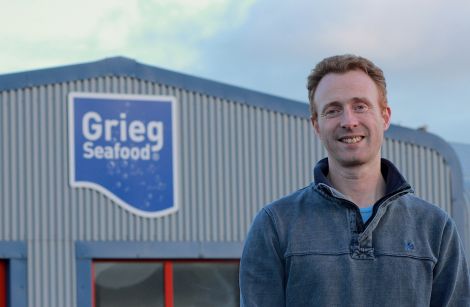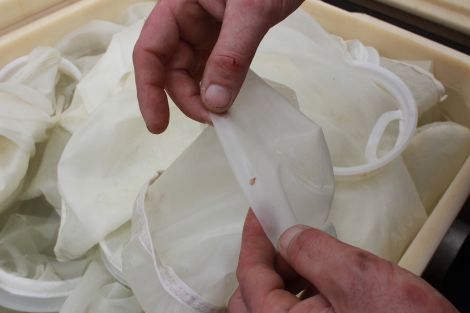News / Seafood firm vows to improve sea lice record
SEAFOOD firm Grieg Seafood Shetland has pledged to redouble its efforts to reduce the amount of sea lice on its salmon farms after a conservation group accused it of possessing a “lamentable record”.
Grieg Seafood Shetland’s managing director Grant Cumming told Shetland News the company already had plans – including cutting back production levels – in place to improve its record prior to Monday’s publication of new figures.
Salmon and Trout Conservation Scotland (S&TC Scotland) said the figures showed that sea lice numbers were “running out of control in much of the industry for extended periods” and failures to operate with lice numbers below Scottish Government trigger levels was “routine”.
The figures were published after the Scottish Information Commissioner ruled that ministers unlawfully tried to withhold information naming fish farms that had breached trigger levels for the number of adult female sea lice on farmed salmon.
Grieg Seafood Shetland was named as the worst performing company in Scotland, with prevalence as high as 22 lice in one week.
S&TC Scotland said the new trigger levels of three adult lice per farmed salmon (at which point a “site-specific escalation plan is required) and eight adult lice (at which point enforcement action may be ordered) were “already very considerably more generous” to fish farmers than the industry’s own code of good practice.
S&TC Scotland director Andrew Graham-Stewart accused Grieg of a “lamentable record” that “exemplifies the very widespread failure to control sea lice in the Shetlands [sic]. It is no wonder that mature wild sea trout are being wiped out in these islands.”
Cumming said the company, which supplies supermarket Tesco and operates numerous sites in Shetland and the Isle of Skye, was acting on several fronts to bring down the prevalence of sea lice.
Become a member of Shetland News
“The first thing to say is that we welcome the publication of the figures,” he said. “I think that public scrutiny is probably in the long term interests of the industry itself, and I think it will help to drive improvements and standards much in the way it did with seal culling.
“Long term it’s the right thing to be doing. We obviously have more lice than we want, and we accept those figures are too high. We’re working very hard to bring those numbers down – we’ve brought in quite a lot of improvements already.
“We’ve made a decision that we are cutting back our production to get rid of sea lice. We’ll be putting less fish in the sea and having longer fallow periods – together with our neighbours – for a period of three months. That should break the life cycle of the sea lice and hopefully mean we have less.”
Other measures include introducing lumpsuckers into all new pens from 2018 and fresh water treatments aimed at reducing sea lice.
He stressed there as “no danger to human health from sea lice” and it was “very unlikely” that sea lice would make it into a packet of salmon sold in the supermarket.
“It’s only present on the salmon’s skin, and we would normally remove any sea lice in the factory before they went away to our customers. The chances of getting a sea lice in a pack of salmon is very unlikely, and even if it was, it wouldn’t do anybody any harm.”
Cumming explained the lice were a natural parasite of both wild and farmed salmon. When there are one or two lice they will graze on the salmon’s mucus, but the danger to animal welfare – if the lice are present in higher numbers – is that they graze through the mucus and start damaging the skin of the fish.
Become a member of Shetland News
Shetland News is asking its readers to consider paying for membership to get additional perks:
- Removal of third-party ads;
- Bookmark posts to read later;
- Exclusive curated weekly newsletter;
- Hide membership messages;
- Comments open for discussion.
If you appreciate what we do and feel strongly about impartial local journalism, then please become a member of Shetland News by either making a single payment, or setting up a monthly, quarterly or yearly subscription.










